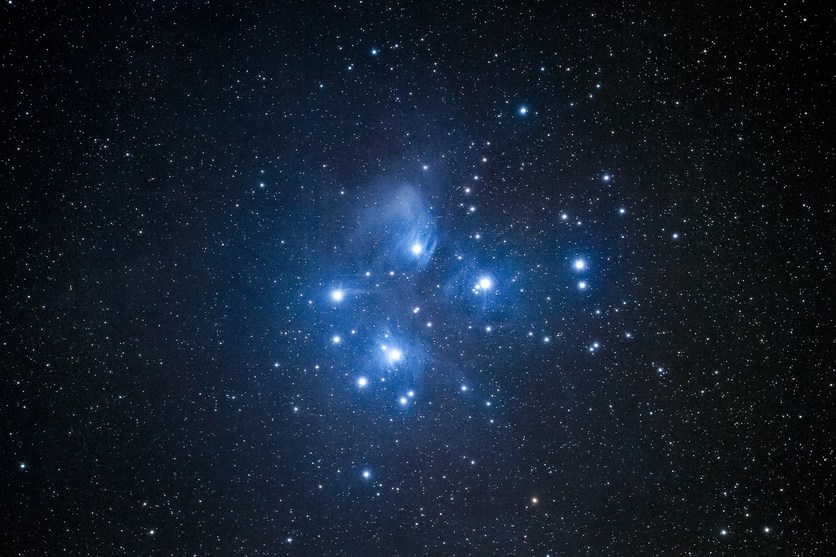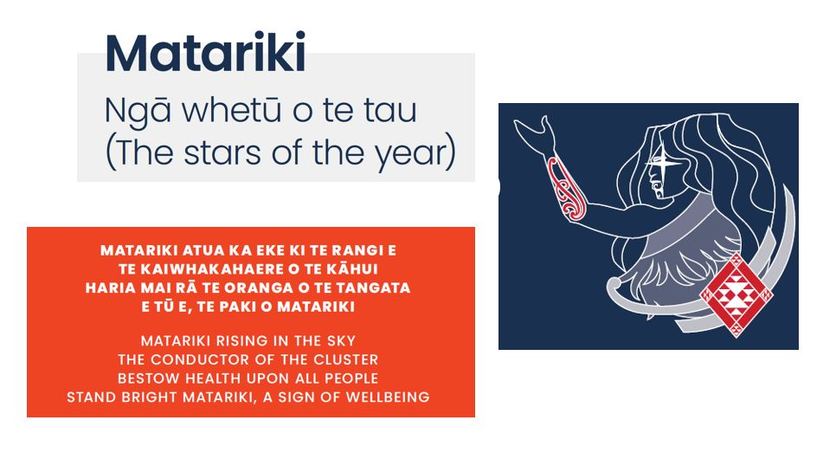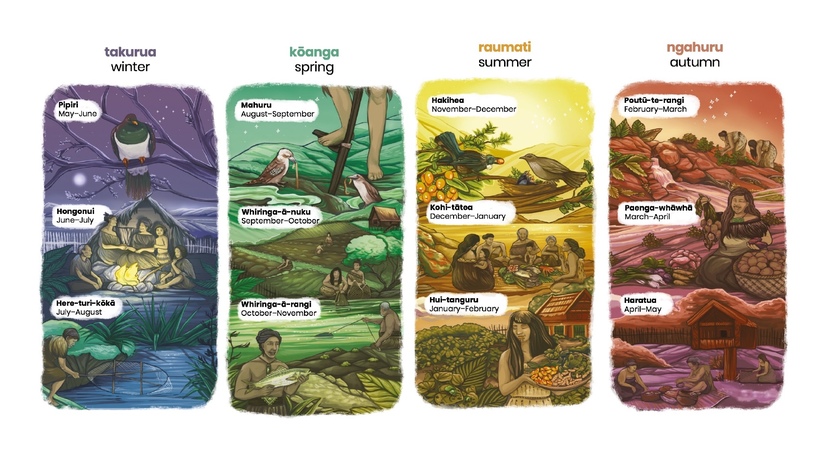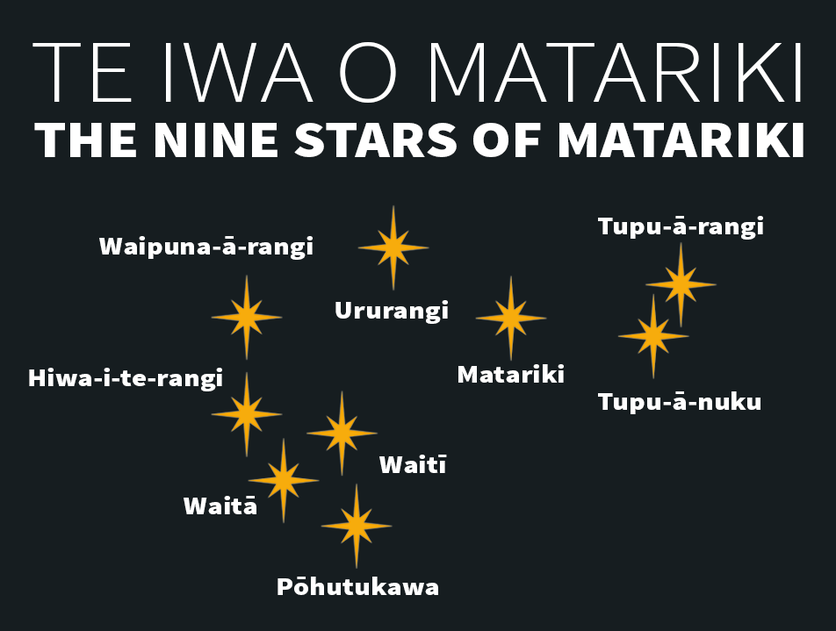Winter brings opportunities to view the night sky and the opportunity to incorporate authentic cross-curricular science learning.
Aotearoa first celebrated Matariki as an official public holiday in 2022. It is the first public holiday to recognise te ao Māori. Although the date of Matariki changes from year to year, it will always be in June or July. The arrival of Matariki is seen as a sign that it is time for people to gather, honour the dead, celebrate the present and look to the future.
Matariki (also known as the Pleiades) is one of the most widely known star clusters around the world! The Science Learning Hub – Pokapū Akoranga Pūtaiao has a number of resources that introduce both the science and mātauranga of this special group of whetū/star cluster.
Linking whetū to the health of te taiao
Matariki presents an authentic context to explore te taiao (the environment) through scientific and mātauranga Māori lenses.
In 2022 Aotearoa New Zealand’s Ministry for the Environment and Stats NZ used the whetū as a framework to explore the state of our environment in their Environment Aotearoa 2022 report. Each whetū in Te Kāhui o Matariki is associated with an aspect of wellbeing and the environment. Each whetū is supported by an article that explores the environmental domain that it represents, connections to our wellbeing, environmental indicators of its present state and mātauranga Māori.
- Matariki – a sign of wellbeing is the whaea (mother) star of the cluster. She ensures the whetū of the cluster rise together in unison to mark a new year and signal the health of the environment.
- Pōhutukawa – pressures on the environment encourages us to reflect on the pressures we’ve put on te taiao and how this information can guide us to take action.
- Tupuānuku – land and soil explores soil quality and soil losses, and why healthy soils are important.
- Tupuārangi – land-based ecosystems explores the ngahere with a special focus on kererū, harakeke and mānuka.
- Waitī – freshwater environments looks at the connection between the mauri of the people and the mauri of our freshwater systems.
- Waitā – ocean and marine conditions reminds us of the strong connections we have with the sea – including kaimoana and cultural practices, recreation and leisure, and the blue economy.
- Waipunarangi – rains, frosts and climate examines climate change impacts on mātauranga Māori, ecosystems and habitats and the economy.
- Ururangi – air, winds and the sky encourages us to pause and observe the winds and the skies. These links between humanity and te taiao will always remain.
- Hiwa-i-te-rangi – future aspirations and actions encourages us to be aspirational in our solutions to environmental challenges
The Te Kāhui o Matariki and the environment webinar unpacks the ideas connected to this report and the associated resources. The supporting collection Matariki and Environment Aotearoa 2022 provides additional context and pedagogical insights.
Matariki and maramataka
Matariki marks the first month in the maramataka – the Māori lunar calendar. Maramataka acknowledges the interconnectedness of humans and nature, emphasising the impact of natural phenomena on the environment. It reflects the holistic approach of Māori science, encompassing cultural, spiritual and scientific dimensions, fostering a deep appreciation and respect for te taiao, its rhythms and need for harmonious coexistence.
Whetū and ngā mata o te marama (phases of the Moon) inform many traditional practices, including wayfinding. Māori possess a wealth of astronomical knowledge known as tātai arorangi. However, tātai arorangi is just one form of early precision measurement.
Observing the night skies
The star cluster gets easier to see after Matariki as it rises earlier and earlier in the morning, then later and later at night. Find the cluster by looking north-east after the festival of Matariki – start with Orion’s Belt and then follow the three stars across the sky to the left until you find the distinctive grouping of Matariki. This can be a great class stargazing exercise.
Take up the challenge
Naming the whetū in Te Kāhui o Matariki – this activity enables students to identify and label the nine whetū in Matariki and learn about their associations with wellbeing and the environment. It includes the labelling interactive Te iwa o Matariki.
Constellations in the night sky – this activity explores star clusters and constellations and cultural legends about them.
Exploring the images and whakataukī connecting to Te Kāhui o Matariki – use this cross-curricular activity to explore written and visual components of the Environment Aotearoa 2022 report’s Matariki representations. Great inspiration for poetry and art!
Matariki and picture books
Our recorded webinar Picturebooks for Matariki with Associate Professor Nicola Daly supports teachers to help deepen both their students and their own understanding of Matariki.
The helpful collection Matariki picture books and science contains the resources discussed during this webinar.
Related content
Explore our range of resources on navigating without instruments in this introductory article.
Want to find more resources on astronomy – we have lots under our astronomy topic and you can use the filters to narrow the results.
Useful links
Visit the Matariki website.
Learn about Matariki with astronomer Dr Rangi Matamua on the LEARNZ website – chose either English or te reo Māori.
For helpful information and teaching resources, see the Matariki section on the Te Wānanga o Aotearoa website.
Utilise the free software Stellarium to find the best date and time for your students to go Matariki hunting.
The Living by the stars website provides links to presentations and resources connected to Professor Rangi Mātāmua’s knowledge of Matariki.
Learn more about Matariki and how it became an official public holiday on the New Zealand Parliament Pāremata Aotearoa website.





